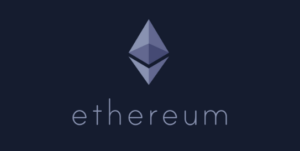Ethereum’s Support Levels Under Pressure Amid Market Challenges

The recent volatility in the price movement of Ethereum has drawn attention to a crucial support range positioned between $2,300 and $2,380. This particular zone holds significance as it serves as a major accumulation point, with more than 1.62 million addresses collectively holding over 50 million ETH within this bracket. The accumulation at this level indicates that if Ethereum continues to face downward pressure, this support range could act as a strong buffer against further declines.
Nevertheless, the current scenario remains delicate. Failure by Ethereum to sustain its price above this support zone could potentially lead to a drop towards $2,200 or even lower levels. Such a decline might bring Ethereum back to levels last witnessed in February, heightening concerns about the stability and future performance of the cryptocurrency.
The outlook for Ethereum is currently divided among market analysts, reflecting the uncertainty surrounding both its short-term and long-term prospects. While some experts are cautioning about a possible significant price drop for Ethereum, others maintain an optimistic view. Analyst Benjamin Cowen, for instance, has raised concerns about a potential plunge in Ethereum’s price to as low as $1,200 by the year-end if current trends persist, attributing this potential decline to a probable collapse of the ETH/BTC trading pair.
Conversely, there is a positive narrative among some analysts who foresee potential catalysts such as increased inflows from Exchange-Traded Funds (ETFs) and a potential breakout in late 2024 or early 2025. These factors could contribute to a more favorable long-term outlook for Ethereum, with some even predicting a surge to as high as $10,000.
The disparity in predictions underscores the ongoing debate within the investment community regarding Ethereum’s future trajectory. While some view the current challenges as indicative of underlying issues, others perceive them as temporary hurdles that Ethereum can surmount with time and strategic market maneuvers.
Examining Ethereum’s technical indicators reveals that its price has been below the key resistance level of its 50-day Exponential Moving Average (EMA) of $6,700, indicating a struggle to gain momentum and potential challenges in surpassing this resistance. The Fear and Greed Index, which measures investor sentiment, currently signals extreme fear among market participants. This heightened fear level can lead to increased volatility as investors react cautiously to market fluctuations, underscoring the market’s nervousness and emphasizing the importance of closely monitoring Ethereum’s price movements in the upcoming weeks.
As Ethereum navigates these obstacles, its ability to defend critical support levels and recover from recent setbacks will be vital. Observers are keenly watching to see if Ethereum can stabilize above the $2,300 to $2,380 support range and stage a recovery. The outcome of this period of volatility is likely to significantly influence Ethereum’s short-term prospects.
Looking ahead, factors such as the overall health of the cryptocurrency market and developments within Ethereum’s ecosystem, including technological advancements and regulatory changes, will also impact its future performance. Ethereum’s continuous evolution and its role within the digital asset landscape will be pivotal in determining whether it can navigate present challenges and achieve long-term success.
In conclusion, Ethereum finds itself at a critical juncture, grappling with substantial challenges in maintaining its price above crucial support levels. The diverse range of analyst opinions reflects varying expectations, from potential short-term declines to optimistic long-term projections. As Ethereum strives to stabilize and potentially recover, stakeholders and market observers must remain abreast of the latest trends and developments that could shape its trajectory. The forthcoming weeks will be instrumental in determining whether Ethereum can overcome its current hurdles and progress towards a more promising future.

